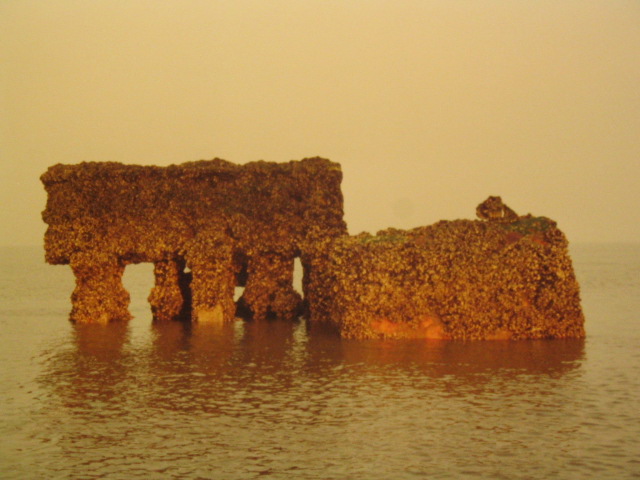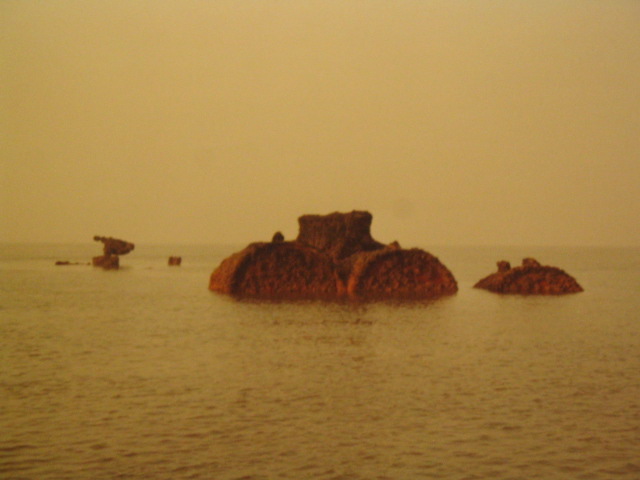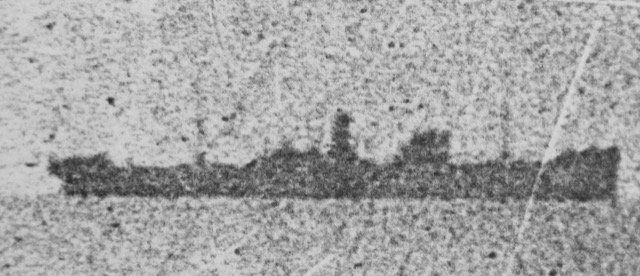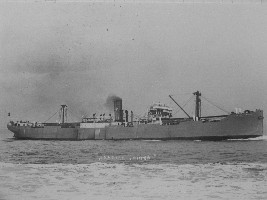
 .
.
From Wrecks of Liverpool Bay by Chris Michael (with permission)
Greek steamship 5764 tons gross, 405 ft long, 52 ft beam, 32 ft draught.
Built: W. Pickergill and Sons, Sunderland 1919.
Engines: Steam triple compound (3 boilers) of 447 nhp,
built Richardsons at Sunderland.
Owners: Theofano Maritime, Chios, Greece (managed N. G. Livanos).
Date of wreck: 2 April 1941
Location: 53° 24.78' N 3° 14.35' W. [OSGB36 Datum]
Distance from New Brighton: 8 nautical miles.
Depth at low water: dries 5.4 metres.
The Nestos started life as the Arabian Prince owned by Prince Lines (Furness Withy and Co.) and registered in Newcastle. Her first year of service as the Arabian Prince was a year of disaster. Her propeller shaft fractured in mid-Atlantic, there was a fire in the hold in Gibraltar and then she was caught in a hurricane at Port Louis on Mauritius. She was later renamed the Zenada and owned by the Z Steamship Co., managed by Turner Brightman of London. In 1933 she passed into Greek ownership, managed by N. G. Livanos.
In 1941 she met more bad luck - ending up stranded on the Hoyle bank. The reason for this has been hard to discover. As it happens there was an English mate aboard: Mr. White. He had survived the torpedoing of his ship the Anglo-Peruvian on an outward convoy. He ended up in Halifax and joined the Nestos to get back across the Atlantic. His report explains what happened.
Carrying a cargo of 7750 tons of sulphur from New Orleans to Garston, the Nestos was ordered to join an eastbound convoy in Halifax to gain protection crossing the Atlantic en route to Liverpool. The weather was very rough and after breakdowns she became separated from her convoy. Eventually she fell in with a convoy coming from the south. By the morning of the 33rd day out from Halifax, in thick fog, the Nestos was alone again. A bearing was taken early in the morning on land presumed to be Point Lynas on Anglesey. Keeping course for Liverpool Bar, at dead slow speed, she ran aground at 12.30. They radioed for assistance but it was not in the correct code so the message was ignored because it might have come from a German U-boat. The sea was calm and Captain Pandelis Tsiropinos ordered the crew to try to pull themselves off the sandbank by running out the anchors, but with no success. The next morning the fog lifted and they saw that they were on the West Hoyle bank just north of Hilbre Island. At about the same time a pilot boat came alongside to give assistance. Their position was outside the area swept of mines, so it was with some risk that this assistance was offered by one of the Liverpool pilot boats.
How had they got onto the Hoyle bank? I can only assume that they mistook the Great Ormes Head for Point Lynas. They were 7 miles off the headland in the early morning in foggy weather. With limited navigational lights being shown because of the war, the mistake in identification is understandable. Then their plotted course for the Bar Light would have taken them instead onto the north east end of the West Hoyle bank.
The vessel was firmly stranded on the sandbank. The rivets started to pop as she took the strain. The crew were taken off and some attempt was made to unload some of her cargo. An eye witness report tells of the ship stuck on the Hoyle bank with its stern towards Hilbre. She kept steam up for a few days and lighters drew alongside to take off salvaged material. She was still in her peace-time colours with white upperworks and a grey hull with the funnel having the owner's house colours. In April 1941, 360 tons of sulphur were recovered. The ship became more hogged as she broke her back on the bank. Her condition deteriorated steadily and it became impractical to salvage any more of her cargo. Instead attempts were made to salvage the iron of the ship herself. However, any salvage came to a complete halt when the coaster Maurita, carrying coal from Point of Ayr to Lancaster, was mined in Hilbre Swash on 12 November 1941 with the loss of all 5 crew. Hilbre Swash is very near the site of the Nestos, so there was a real danger to the salvage vessels. By 1943 she was being used by the RAF as a target for bombing practice.
This wreck is still visible above water. From Hoylake promenade or from Hilbre Island, at low water, she can be seen with binoculars. The engine block stands proud, encrusted with a thick layer of mussels. To the east lie her three boilers, while to the west are the remains of the steering quadrant looking from a distance like some huge metal mushroom. I have swum around the wreck and clambered onto it, but the underwater visibility is essentially nil. At spring low water, there is quite extensive wreckage above water - a "wellington boot job".
Recent photos of wreckage near Low Water:

 .
.
Image (poor quality, taken from Hoylake) of Nestos aground in 1941:

Nestos in service as the Arabian Prince:
